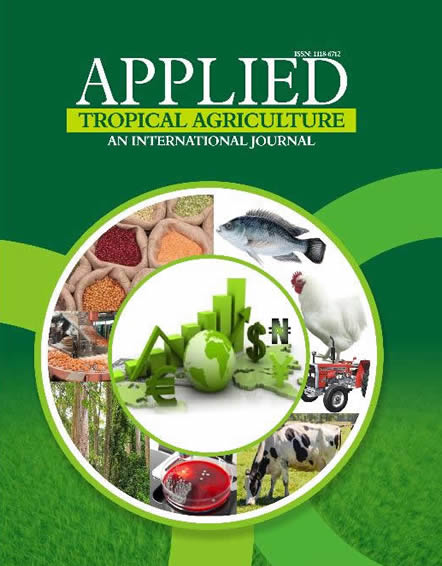Gari, a creamy white granular food product from cassava roots is a major staple consumed in both urban and rural areas due to its convenience. Gari was fortified with soybeans or groundnut at 10%, 20% and 30% respectively to produce “soy-gari” and groundnut-gari. The samples were analyzed at the initial stage of production and after eight months of storage. The proximate composition showed that moisture content, protein, fat, ash, crude fibre and carbohydrate were in range of 7.97 – 8.93%, 1.17 – 1.57%, 1.33 – 1.47%, 1.67 – 1.73%, 1.67 – 1.63% and 86.20% - 84.83 respectively at the initial production while results at eight months of storage ranged between 8.93 – 9.23%, 1.40 – 3.80%, 1.57– 3.73%, 1.20 – 2.50%, 2.80 – 1.90% and 79.50 – 84.10% respectively for soy-gari. Groundnut fortification increased the protein content from 1.17% to a range of 1.77% - 4.47%, the fat increased from 1.33% to 1.37% - 4.17%; while the carbohydrate content reduced from 86.20% to 84.33% - 78.45%. Sensory evaluation of flour and gari meal (Eba) was conducted. The result showed that gari fortified with 30% soybeans and groundnut preferred most in term of appearance, aroma, texture and mouth feel. The sensory evaluation for the soy and groundnut gari meal (Eba) showed that control samples were the most acceptable followed by the 10% of each legume. However, the increase in protein and other essential nutrients indicate that fortified gari have better nutritional qualities than control gari, therefore if globally accepted, it can prevent protein energy malnutrition.
PAPER TITLE :CHEMICAL AND SENSORY QUALITIES OF STORED GARI FORTIFIED WITH SOYBEAN AND GROUNDNUT FLOUR
APPLIED TROPICAL AGRICULTURE | VOLUME 21 NUMBER 2 2016
Paper Details
- Author(s) : Ajani, A.O.1; Alade, O.A.1; Olagbaju, A.R.1; Fasoyiro, S.B.2; Arowora, K.A.3 and Oyelakin, M.O.1
- Abstract:


